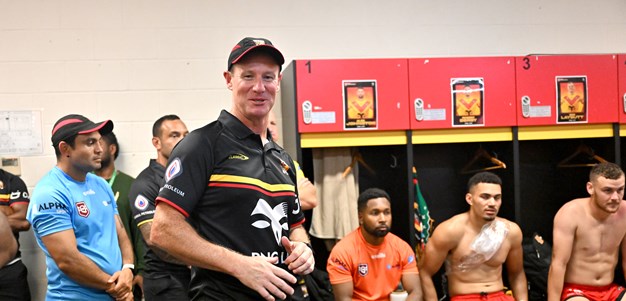All rugby league fans were treated to a high-energy, high-scoring final 10 minutes in the Sydney Roosters v South Sydney Rabbitohs match last Monday night. A total of 18 points were scored in the final eight minutes of the game. That the Bunnies reversed a similar scenario against the Chooks in Round 1 back in March got me thinking. What is the best method to defend a lead in the final 10 minutes of a game?
The progression and development of rugby league players through the National Youth Competition (NYC) for young men aged 20 years and below is a major factor when looking for a reason why so many points are scored in the final 10 minutes of a game.
These athletes are contracted to a philosophy of “No study or work = no play”. Most NYC players commence training after 4pm for at least four days per week, but still play an NRL equivalent 80-minute game each weekend (40 minutes each way).
When you factor in that all players are aged 17, 18, 19 or 20 you realise that the final 10 minutes of an NYC game resembles at times an aggressive game of touch football. It’s great for spectators and television, but skewed heavily towards attack and young players are increasingly adept at brilliant attacking play. When they progress to NRL they are still brilliant attacking players and we see this every week.
Fitness is a huge factor in being able to defend a lead. NRL coaches in the last couple of years carry players on the interchange bench they do not even use. Interchanges are capped at 10 per game, but are rarely utilised.
Fitness will determine your ability to move up in defence and not allow the attacking player space and time to prise apart the defensive line. Fitness will assist the mental strength of the individual and his decision making capacity in the final stages of the match.
When you are in front, the tendency is to stop playing and be conservative in decision making. This is very apparent in the final 10 minutes of a game. Add to this the opposition team chasing points, pushing the boundaries for momentum and taking many more risks with the ball and the vulnerability for a last minute change of lead increases dramatically.
The Sydney Roosters had to defend for three minutes to win the game last Monday night. Souths threw more passes, had more desperation in promoting the football and the Roosters played passively. There was one defensive error when a Roosters player thought he could take an intercept and Nathan Merritt scored.
Should the Roosters have kicked off to Dave Taylor? If they kick off to the opposite side of the field, then on play two Souths pass the ball wide to Taylor and who knows what happens. Kicking off to him against 11 chasing men was definitely the better proposition…or so it seemed at the time.
What are the solutions?
1. Train hard in the off-season, be fitter than the opposition and repel all endeavours.
2. Use all your interchanges to finish the game with fresher players.
3. Defend the lead in the last 10 minutes with the most athletic team you have at your disposal (possibly at the detriment to size).
4. Keep playing aggressively, even when you are in the lead (quick play-the-balls, short passes, maintain momentum, score points).
Top 5 Performances defending a lead for final 10 minutes:
1. NSW v Queensland State of Origin 2 (Watch the Highlights)
2. Queensland v NSW State of Origin 1 (Watch the Highlights)
3. Cronulla Sharks v Melbourne Storm Rd 10 (Watch the Highlights)
4. Brisbane Broncos v New Zealand Warriors Rd 19 (Watch the Highlights)
5. Melbourne Storm v Canterbury Bankstown Bulldogs Rd 7
(Watch the Highlights)
You can follow Daniel Anderson on Twitter, Facebook and on ABC Grandstand.

